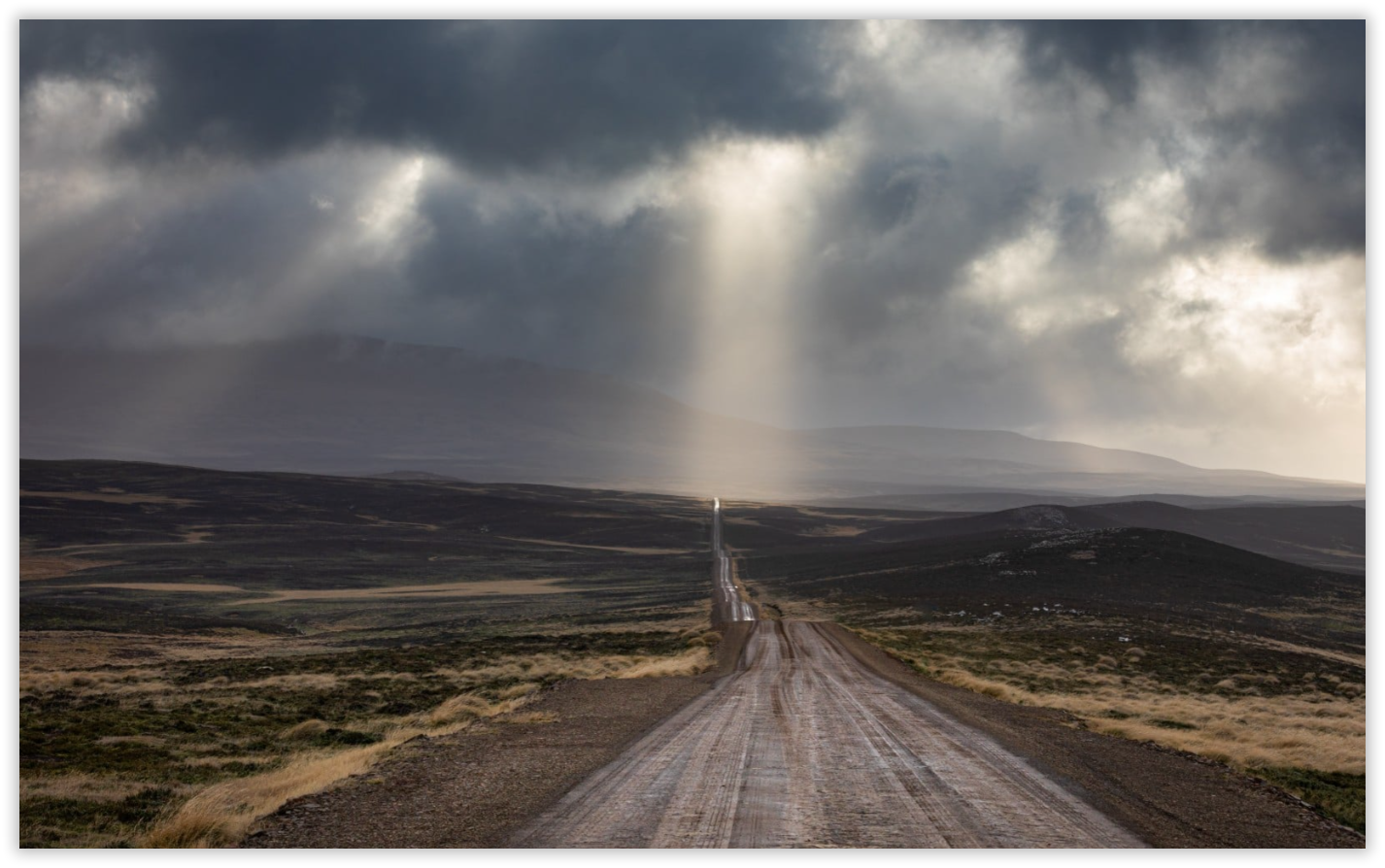
Light at the end of the road in Camp
Photo credit: Simon Verrechia
This post has been reviewed in the 16th October issue of Penguin News.
While the previous OpenFalklands post, “Stanley’s Broadband Crossroads: From Copper Legacy to Fibre Future,” explored upgrading Stanley’s legacy ADSL network, this post looks at the possibilities of upgrading Camp telecommunications.
The rapid adoption of Starlink across Camp has already transformed life outside Stanley, bringing reliable, fast broadband to areas previously underserved by the traditional network provided by Sure South Atlantic (Sure SA). This post explores the broader telecommunications landscape in Camp, examining which technologies can best support its future connectivity and improve quality of life even further.

But First, Where is “Camp”?
Geographically, all territory outside Stanley in both East and West Falklands is known as “Camp”, from the Spanish campo, meaning countryside. Covering roughly 12,000 km², about 99% of the islands’ landmass, Camp is home to just 300–500 residents depending on the season, mostly living in small settlements of 10–40 people or on individual farms or one of the 766 islands. Goose Green (40–50 residents) is the largest settlement outside Stanley.
Roads link Stanley to parts of East Falkland. However, on West Falkland and the outer islands, travel is by small plane (FIGAS), ferry between East and West Falklands, or boat, making broadband delivery and technical support uniquely difficult.
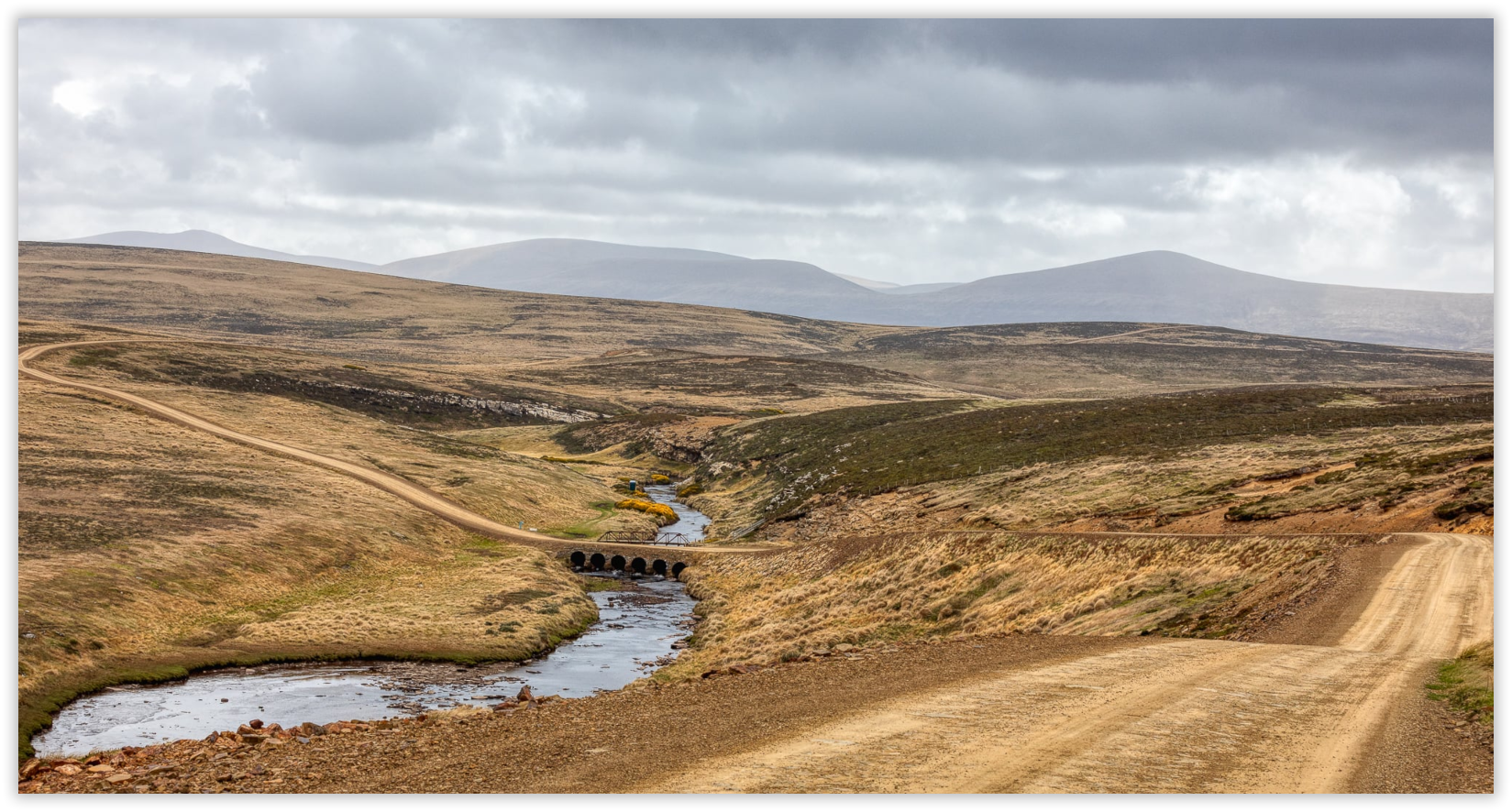
Camp’s broadband network strategy has long relied on Fixed Wireless Access (FWA). In theory, FWA can deliver broadband over mobile radio towers; however, in practice, coverage has been poor, reliability has been patchy, and the network has been prone to weather-related issues and congestion. Many settlements in Camp today lack access to both dependable broadband (without the use of Starlink) and voice services, a fundamental barrier to modern life and business.
By contrast, the rapid uptake of Starlink in Camp in 2024 highlights how residents have taken matters into their own hands, as has been experienced on Ascension Island. With speeds of 50–250 Mbps downstream and 20–40 Mbps upstream and a latency of around 30 ms, it has proven transformative. For many in Camp, Starlink has replaced the unreliable FWA as the de facto broadband service.

From WiMAX to LTE: The Evolution of FWA
For several decades, Fixed Wireless Access (FWA) has served as the multi-hop backbone of the Camp broadband and telephony network, linking smaller settlements, farms, and outlying islands to Stanley. Originally built on the legacy WiMAX standard, it provided essential last-mile connectivity. However, WiMAX performance declines significantly over long distances, requires a clear line of sight, and is highly susceptible to interference from the weather conditions and challenging terrain. In the Falkland Islands, the role of the multi-hop backhaul links to Stanley relies on multiple repeaters to extend coverage to remote farms and islands. This inherently challenging setup has always limited its reliability beyond populated settlements.
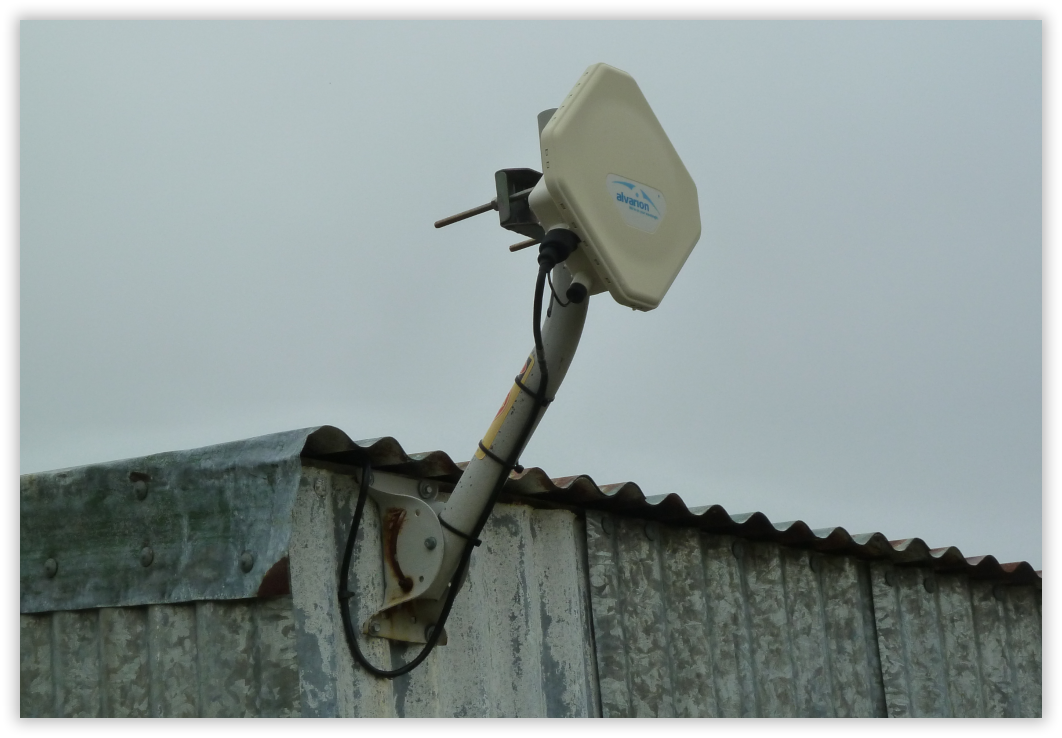
The photo above shows a 2014 Camp Alvarion BreezeMax WiMAX domestic antenna (Alvarion was placed into receivership on 15 July 2013). Back in 2015, Cartesian’s analysis of the islands’ telecoms infrastructure stated: “However, we understand from Sure that they have stockpiled a number of network spares, enabling them to safely provide in Camp voice and broadband for a further 5 – 10 years.”
By the late 2010s, WiMAX became a dead-end technology. LTE (4G) became its natural successor, offering faster speeds, lower latency, and the ability to serve both fixed and mobile users from the same towers. Starting the upgrade of Camp’s towers to LTE was a logical step, aligning with global standards and hopefully improving reliability.
Yet, even with the use of LTE, the same core challenges persist: vast distances, rugged terrain, and sparse populations make tower-based networks expensive to expand and unreliable in poor weather.

Starlink’s Impact
Starlink’s 2024 rollout has been groundbreaking. Delivering 50–250 Mbps down, 20–40 Mbps up, and around 30 ms latency, it has become Camp’s de facto broadband solution. For many, it has replaced WiMax/LTE FWA broadband entirely.
But a national connectivity strategy cannot rely solely on private Starlink adoption. To build resilience, reduce inequality, and enable future services, Camp’s connectivity needs a coordinated, multi-technology approach.

Reviewing Technology Options for Camp
These are the telecommunications technologies available for use in providing services in Camp going forward.
Optical Fibre
Fibre-to-the-premises (FTTP) or a fibre-based network backbone is neither practical nor necessary in Camp’s highly dispersed geography.
Microwave Backhaul
High-capacity point-to-point microwave links already backhaul traffic to and from Stanley, to some settlements and the Mount Pleasant complex. This remains a proven and cost-effective technology which can provide high-capacity connections between sites.
LEO Satellites (Starlink, Project Kuiper, OneWeb)
LEO satellites are the only technology currently delivering high-speed, low-latency connectivity to Camp. Other than Starlink, OneWeb is being offered by Sure SA. Amazon’s Project Kuiper is well underway, with 128 satellites already launched by October 2025. In future, community gateways could serve settlements more efficiently, though cost remains a barrier.
VOIP over LEO
A SIP-based Voice over Internet Protocol (VoIP) via Starlink could offer a 21st-century solution to replace traditional PSTN fixed-line phone services, provided they are not rendered obsolete by the increasing adoption of mobile phones. For some technical details about how this may be achieved, please take a look at the Addendum below.
5G/4G LTE FWA
Upgraded LTE FWA networks will benefit users in settlements near towers, but remain unreliable for multi-hop links to remote farms or islands. FWA’s role should focus on settlements, not long-range backhaul.
4G Mobile Service Expansion
4G mobile coverage on Camp roads between settlements remains limited and particularly bad in many parts of Camp. Recent mobile signal strength measurements on roads in the East and West Falklands have revealed long sections with poor or no reception. For example, the results displayed below indicate adequate signal strengths in green, poor coverage in red, and no coverage in black between Port Stephens (middle-left), Albemarle (bottom-centre), Fox Bay (top-right), and Leicester Falls (top-centre).
Moreover, we should consider that the fixed landline PSTN infrastructure in settlements could be entirely replaced by mobile 4G telephony services, as is happening in other countries.
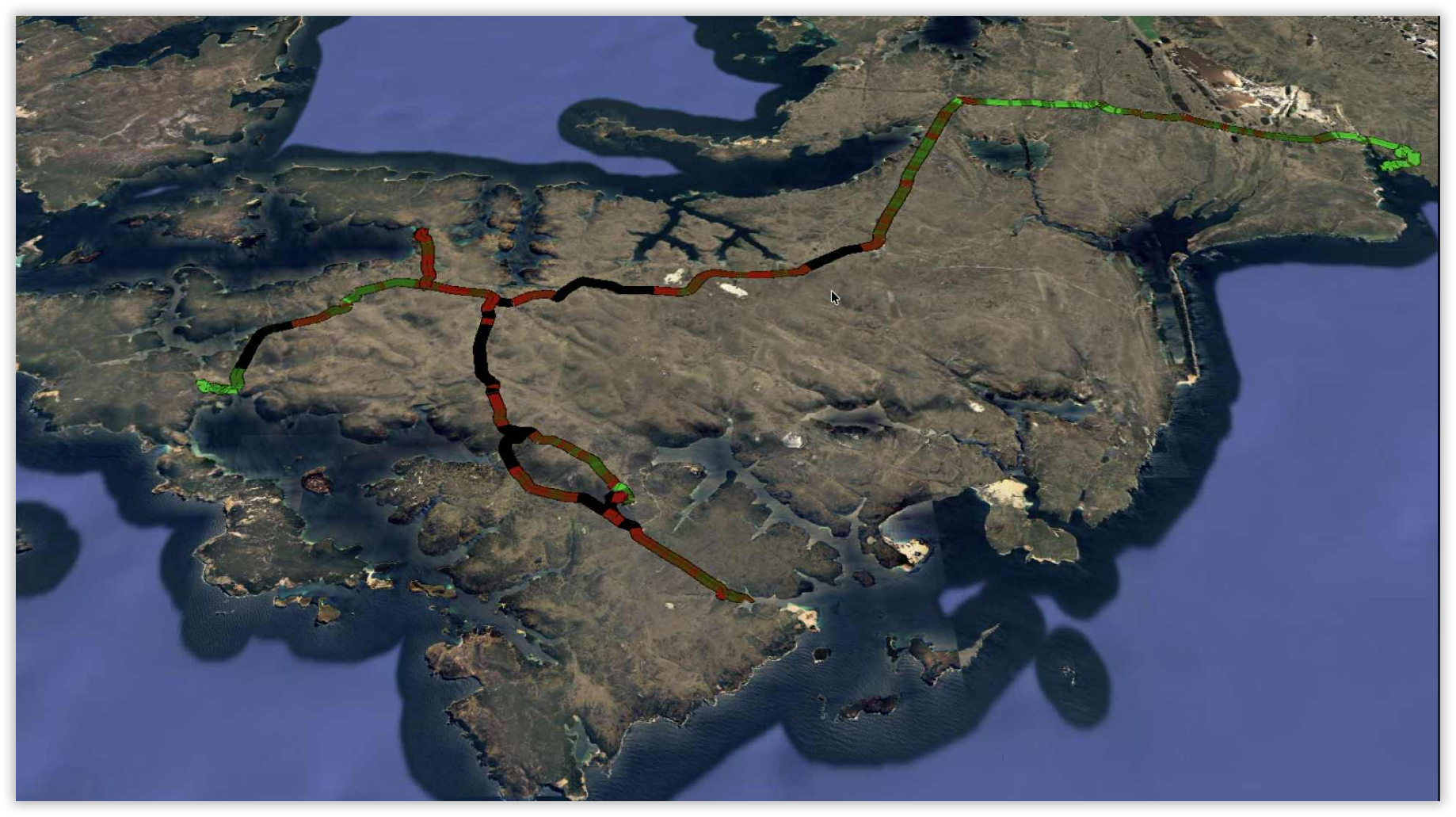
DTD (Direct-to-Device Satellite)
Emerging DTD services from LEO companies such as Starlink could soon connect standard mobile phones directly to satellites. I’ve written about this technology in a previous post – D2D is Coming: The Next Revolution in Falklands Connectivity? This could be revolutionary for Camp, where erecting towers is costly. If, or when, DTD matures, it could supplement or even replace traditional rural mobile buildouts and indeed FWA infrastructure.
Old but trusted Communications
It would be remiss of me not to mention a couple of legacy technologies that still have a part to play. Before the arrival of FWA connectivity in Camp, individuals often used Geostationary (GEO) satellite phones, primarily supplied by Inmarsat, whose services remain available across the South Atlantic today. These systems offer wide coverage and dependable voice connectivity for emergency use.
Alongside satellite phones, the use of VHF radio networks operating in the 2-metre amateur band as a citizens’ band has long played a crucial role in Camp’s communications. They remain widely used today for local voice contact between residents, FIGAS aircraft, and emergency services, offering a resilient and straightforward means of coordination in areas with no mobile or broadband coverage.
Despite their age, these systems continue to provide a reliable and valuable layer of redundancy and safety, particularly in emergencies or during network outages.
 A Hybrid Model for the Future
A Hybrid Model for the Future
No single technology can meet Camp’s unique challenges. The most effective approach is a hybrid network model, combining the strengths of LEO satellites, microwave backhaul, selective 4G/LTE upgrades, and future Direct-to-Device satellite connectivity.
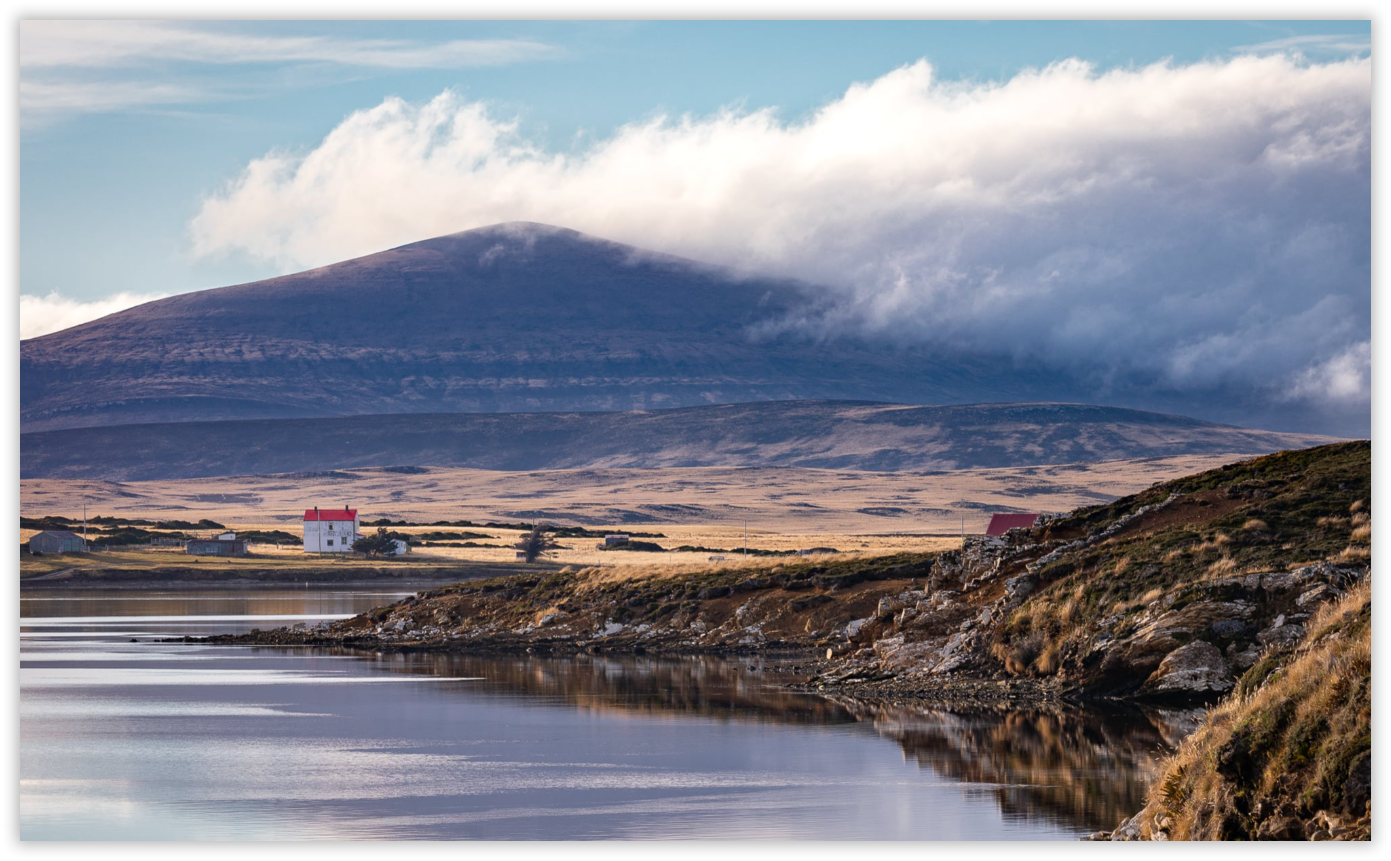
High-capacity microwave backhaul will continue to play a critical role, linking Stanley, Mount Pleasant, and key settlements. Modern IP microwave systems can provide weather-resistant, high-capacity links, forming a stable terrestrial backbone that complements satellite services without the need for fibre.
LEO satellites such as Starlink, OneWeb, and Amazon’s Project Kuiper should form the backbone of Camp’s broadband and VoIP services. Starlink already delivers reliable high-speed connections with low latency, reaching even the most remote farms and islands. As additional constellations come online, competition will improve resilience and lower terminal costs. In time, community-based LEO satellite gateway installations could serve small settlements more efficiently.
LTE-based FWA and 4G expansion still have value, particularly 5G within settlements and 4G along main roads where improving mobile coverage is essential. However, long multi-hop LTE FWA links have reached their limits and should be replaced by direct LEO access wherever possible.
Looking ahead to the longer term, Direct-to-Device (DTD) satellite connectivity, being developed by companies such as SpaceX/Starlink, could transform rural communications by connecting ordinary smartphones directly to satellites. This could extend mobile coverage across the entire Falklands without the need for new towers or complex infrastructure.
Fixed-line PSTN services: As 4G coverage gradually expands across Camp, it is conceivable that fixed PSTN landline services could be phased out entirely in favour of mobile voice over LTE. This mirrors trends in many other small or rural jurisdictions, where mobile networks have become the primary means of providing telephony. In practice, however, this transition will only be viable if 4G coverage becomes sufficiently extensive and resilient. Until such time, a mixed approach, maintaining limited fixed-line voice while prioritising mobile and VoIP services over LEO or LTE, will likely remain necessary.
In short, Camp’s future lies in combining these technologies: LEO satellites for universal broadband, microwave for strategic backhaul, LTE for local access, and DTD for full mobile reach. Together, they can deliver a resilient, flexible network built for the Falklands’ geography and the needs of its remote communities.
Conclusions
The reliance on FWA for Camp broadband and telephony has left large parts of the Falklands under-connected, with poor reliability and patchy coverage. Starlink has already demonstrated that LEO satellite-based services are the most practical broadband Internet access technology for scattered settlements. However, it must be integrated into a coherent national connectivity strategy.
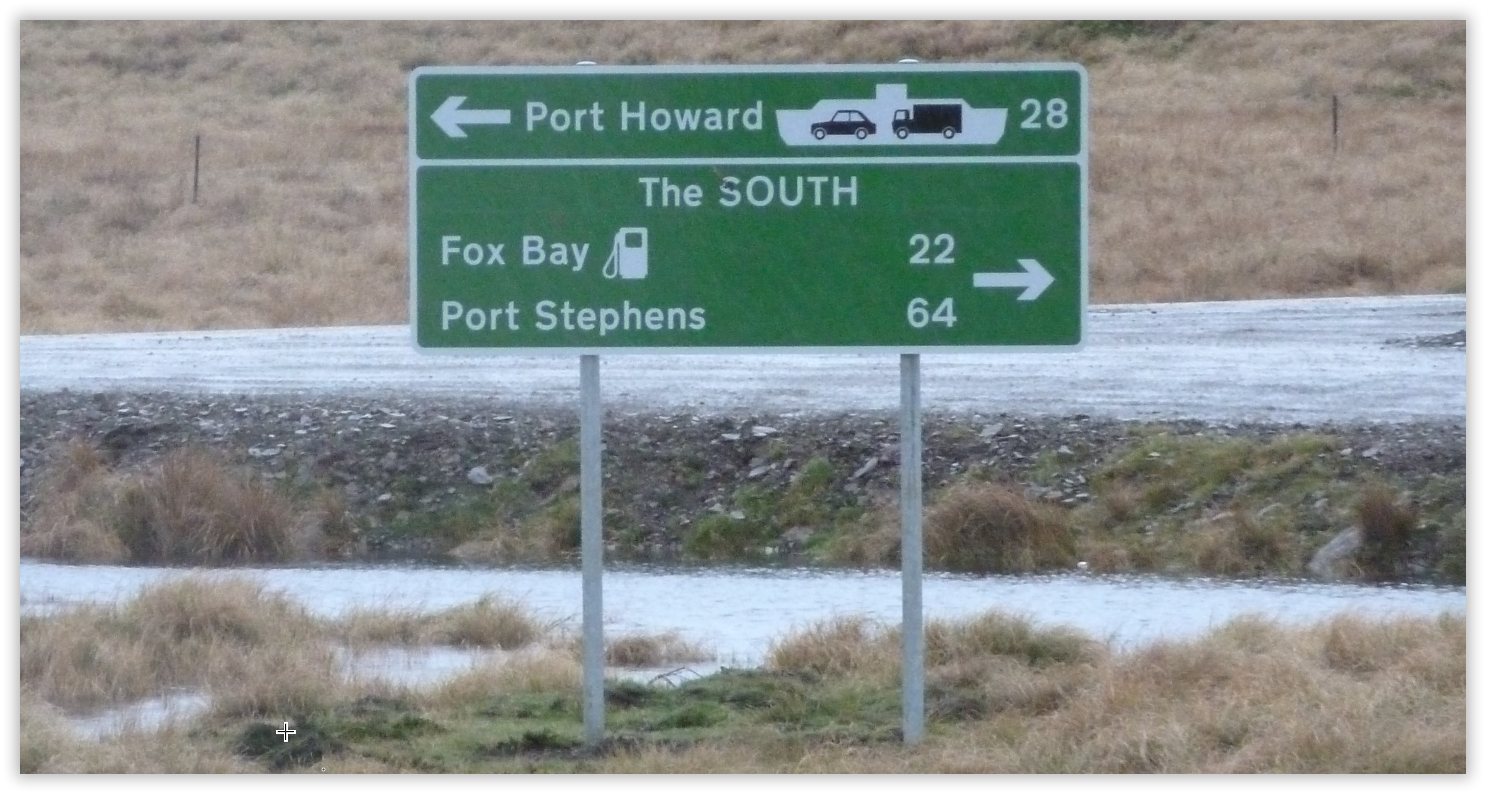
Resilience is another key factor. In an environment where weather, terrain, and remoteness often conspire to disrupt links, no single technology can be relied on. Camp’s digital future lies not in doubling down on FWA, but in combining LEO satellites, selective 4G expansion, and emerging DTD solutions into a hybrid model.
Ultimately, the question is not just which technologies to adopt, but how to fund and coordinate them. A robust, future-proof network for Camp requires investment, planning, and regulatory clarity. Still, the prize is significant: closing the digital divide, enabling rural economies, and ensuring resilience for decades to come.
Finally, connectivity is not just about faster streaming speeds, which often dominate consumer demand on Sure SA’s broadband network. Reliable broadband underpins Camp’s economic and social future, supporting telemedicine for isolated families, enabling precision farming, connecting students to global education, facilitating remote work, and making tourism services more competitive. In short, modern connectivity is about ensuring that Camp is not left behind in the islands’ digital future.

Addendum: Replacing the PSTN in the Falklands with SIP over Starlink
Several readers have asked me this question, so I will expand on how this might be achieved.
Sure SA could replace the copper network by offering SIP-based voice services over Starlink, combining modern VoIP with next-generation satellite broadband. To make it work, Sure SA needs the correct Starlink service. Standard residential plans use carrier-grade NAT (CG-NAT), which blocks inbound SIP traffic. Instead, a Starlink Business or Local Priority plan with a public or static IP address is required to ensure reliable call routing and inbound connectivity.
However, it is way beyond the scope of this post to delve into the technical difficulties of achieving this for a true PSTN replacement service using Starlink. If all consumers have a business Starlink account with a fixed IP address, which is not really a practical option, then everything is straightforward. However, if that is not the case, then several technical complications would need to be addressed. Starlink’s use of CG-NAT isn’t a showstopper; it just adds complexity.
At the network edge, Sure SA would deploy a Session Border Controller (SBC) or IP-PBX. This manages SIP signalling, encrypts calls (TLS/SRTP), handles NAT issues, and protects against fraud while maintaining call quality.
To connect customers globally, Sure SA will still need interconnect agreements with upstream carriers, manage numbering and porting, and ensure emergency-call routing (999) as they do today. Backup connectivity is essential so emergency calls remain available even during a Starlink outage.
Redundancy via a secondary satellite link (Intelsat) improves reliability and ensures voice continuity during disruptions. 
Chris Gare, OpenFalklands, October 2025, copyright OpenFalklands

Thanks for this write-up Chris.
Having had the luxury of a “Test and Trial” licence from Aug ‘23, and taken a V2 dishy out and about everywhere, powered by a simple inverter, I can tell you that the freedom it bestows, and the massive difference in performance and price compared to what was available through Sure SA Ltd, is extraordinary.
As you point out, islanders have embraced Starlink, and being able to use a mini-dish powered from a cigarette lighter plug, or ever a drill battery becomes a no-brainer when going out into camp.
The picture showing mobile coverage on the roads needs a little context – south of Fox Bay, the area is pretty much equal to the Isle of Wight, but instead of 140,000 inhabitants, here we have less than 20 to call on.